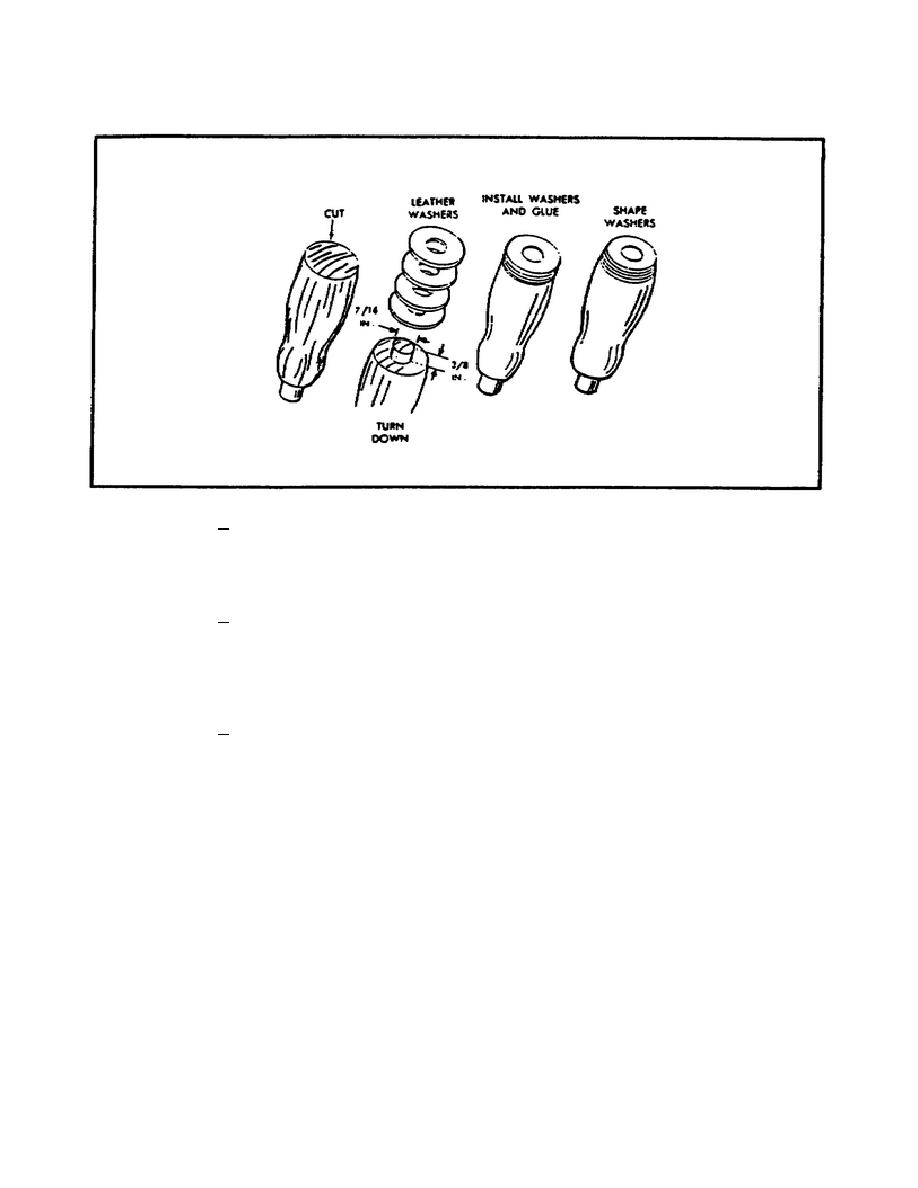
USE/CARE OF HANDTOOLS & MEASURING TOOLS - OD1621 - LESSON 2/TASK 2
FIGURE 92.
REPAIRING MUSHROOMED HANDLE.
4 After the glue dries, reshape the handle end by cutting and
sanding the washers to conform to the original rounded shape.
(d) Replacing Broken Handle.
1 If a socket-type handle is
damaged beyond repair or is
broken off in the socket, remove the handle,
drilling out the broken ends
from the socket if necessary.
Shape a new
handle to fit snugly in the
socket. Secure the blade in a soft-jawed vise
and tap the handle to seat in
the socket.
2 If a tang-end type handle is damaged beyond repair, or is
split, remove the handle. Select a new handle to fit the tang and chisel.
Fit a ferrule on the handle by tapping with a soft-faced mallet.
Prick
punch ferrule to handle and insert the tang in the handle. Tap the back end
of the handle on a flat surface until the chisel is properly seated.
(2) Machinist's and Blacksmith's Chisels.
(a) Grinding.
Grind chisels of this type immediately when they
become dull. Most of these chisels have two bevels, which form the cutting
edge.
The included angle formed by the two bevels should be as small as
possible without leaving the cutting edge weak. If the angle is too small,
the chisel will soon become dull; if the angle is too large, more force will
be required to drive the
119



 Previous Page
Previous Page
